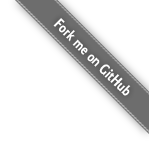Differences
This shows you the differences between two versions of the page.
| Both sides previous revision Previous revision Next revision | Previous revision | ||
|
network_backup_strategies [2012/05/16 01:44] henri |
network_backup_strategies [2012/05/16 01:45] henri [Using MacFUSE for Network Backup] |
||
|---|---|---|---|
| Line 37: | Line 37: | ||
| ==== Using MacFUSE for Network Backup ==== | ==== Using MacFUSE for Network Backup ==== | ||
| - | It is possible to use [[http://code.google.com/p/macfuse/|MacFUSE]] and the [[http://code.google.com/p/macfuse/wiki/MACFUSE_FS_SSHFS|SFTPFS]] system to mount a remote directory into the local file system via SFTP. Once a remote directory has been mounted it is possible to use LBackup to push files to the remote directory. However, it is recommend that you create an HFS+ disk image and then mount this when you push files. This will allow extended attributes such as resource forks to be backed up. An other alternative worth considering is [[http://www.lbackup.org/synchronizing_disk_images_between_machines|pushing a local sparse bundle backup disk image to a remote server]] via SSH as a post action (when the backup completes). | + | It is possible to use [[http://code.google.com/p/macfuse/|MacFUSE]] and the [[http://code.google.com/p/macfuse/wiki/MACFUSE_FS_SSHFS|SFTPFS]] system to mount a remote directory into the local file system via SFTP. Once a remote directory has been mounted it is possible to use LBackup to push files to the remote directory. However, it is recommend that you create an HFS+ disk image and then mount this when you push files. This will allow extended attributes such as resource forks to be backed up. |
| + | \\ \\ | ||
| + | An other alternative worth considering is [[http://www.lbackup.org/synchronizing_disk_images_between_machines|pushing a local sparse bundle backup disk image to a remote server]] (when the backup completes) via SSH as a post action script. | ||
| \\ \\ | \\ \\ | ||
| \\ \\ | \\ \\ | ||

